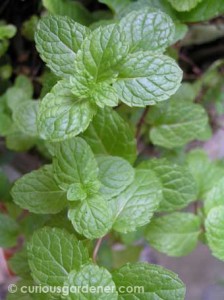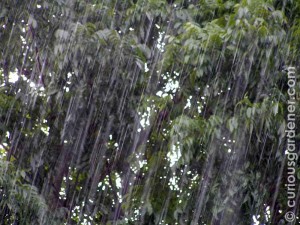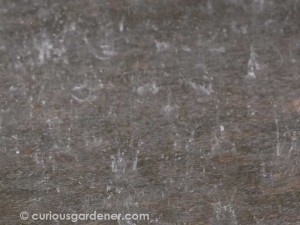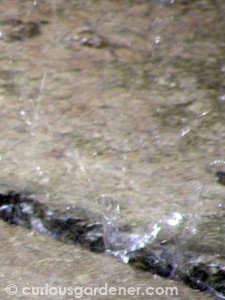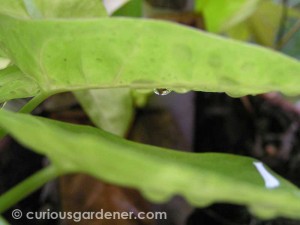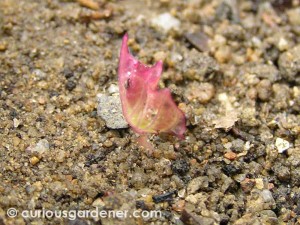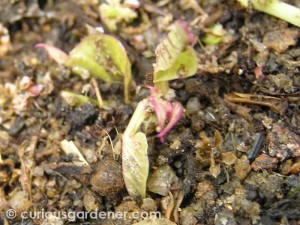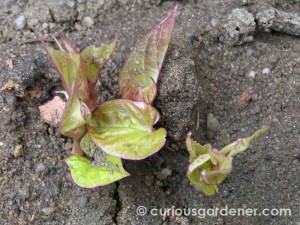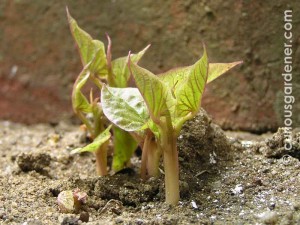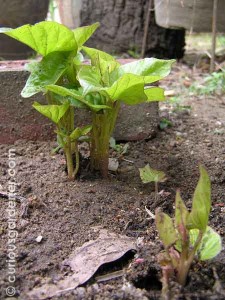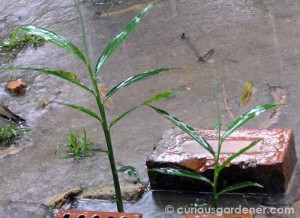I’ve tried propagating many plants from cuttings and had different levels of success. Of course there are so many factors to consider – resilience of the plant, type of potting media used, how much to water, etc. I recently read on the GCS forum that it’s fairly easy to propagate mint cuttings in water. Since this was something I’d not tried before, I just had to experiment.
I made a few cuttings from my pot of mint and stripped the leaves from the bottom two-thirds of the stems. It was my plan to keep them in a small glass vase so that I could observe how long it would take the roots to emerge.
After fitting everything in, it occurred to me to use a bit of rooting hormone to help the cuttings along. Using one of the now wet stems, I dipped it into the powdered hormone then stirred the powder-covered stem in the water in the vase. I replaced all the stems in the hormone slurry and sat back to wait and watch (metaphorically speaking, of course).
The hormone powder settled at the bottom of the vase, and I stirred it up a couple of times a day by swirling the bottle gently. Every second day, when the powder was settled at the bottom of the vase, I’d change the water, because I didn’t want mosquitoes to think of that as a possible breeding ground. There was more than enough of the hormone left after I changed the water, so that was all good.

Progress of the rooting after almost a week in rooting hormone solution. Notice the stems growing from the previous leaf nodules. Hint: click on the picture for a bigger view!
On the third day, I saw the first tip of a root start to grow out at one of the leaf nodules in the water. By the following day, all the stems had sprouted some amount of root, and boy did they grow rapidly!
So now that the roots were out, I thought I would pot them. Well, one of my biggest faults is that I procrastinate …often. Because of that, the cuttings stayed in their little glass vase for another 3 to 4 days, and this allowed me to make another unexpected discovery — new stems had begun to sprout, also from the old leaf nodules! As always, I was fascinated with this new development and had to document and share it with you.
It’s fairly safe to say that these babies will be potted very soon and will be made welcome in the nursery. Shh, just don’t let them know they’ll go into a different kind of (cooking) pot somewhere in the future! ![]()
© 2010 curiousgardener.com All rights reserved.

